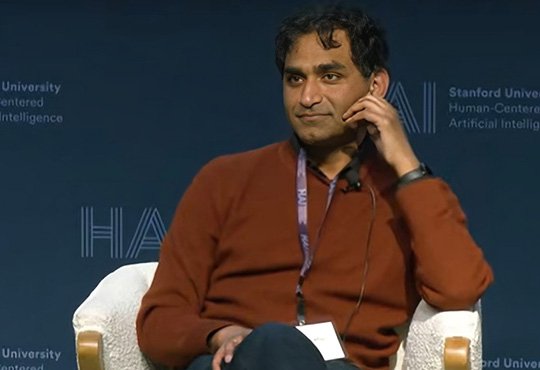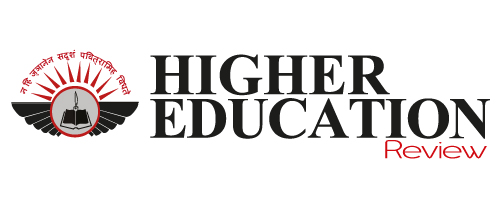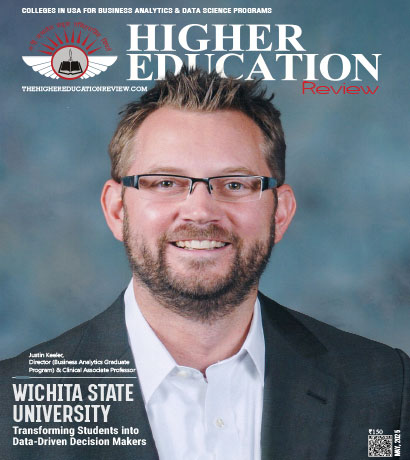AI’s Impact on Education: Balancing Technology and Critical Thinking
 Shantanu Sinha, VP & GM, Google for Education, presented his perspective on the revolution in education with AI and digital technologies at the AI+Education Summit. He discussed the growing access to technology over a period of time, which benefited students in the rural areas. He emphasized the need for teachers who could guide students to develop critical thinking as well as collaborative capacities. He emphasized responsible use of AI, especially among young learners, and called for the forward-looking shift towards content generation, problem-solving, and innovation in education.
Shantanu Sinha, VP & GM, Google for Education, presented his perspective on the revolution in education with AI and digital technologies at the AI+Education Summit. He discussed the growing access to technology over a period of time, which benefited students in the rural areas. He emphasized the need for teachers who could guide students to develop critical thinking as well as collaborative capacities. He emphasized responsible use of AI, especially among young learners, and called for the forward-looking shift towards content generation, problem-solving, and innovation in education.
One of the characteristics related to technology adoption is the initial risk for the people who are going to adopt it. They're the people who have access to the devices and connections. There is also a near-term impact on the technology adoption. However, over time, people can raise and level the playing field. For example, 15 years ago, YouTube videos were used by only a segment of the population, but today, YouTube has two billion users around the world.
According to a recent survey, 93% of people use YouTube for some form of learning and informational purpose. It is happening in most of the remote regions of the world. In India, people are watching educational videos on YouTube using their Android phones. It's bigger than Moore's Law, where there are 10 x reductions in the cost of delivery. The availability of open-source models is coming out, which opens it up for large access to a lot of people. Moreover, on-device models provide better performance even in the low-cost Android phones. Technology adoption moves forward and it has become more accessible and equitable.
Teaching critical thinking in the AI era
When people are using technology, especially students, they think they know more than they do. Students often think that they're learning well with AI. They are getting help from AI and they think AI helped them through that process but students are not necessarily practicing the skill that matters. That is where the role of the educator is crucial because the educator can come in there and say, it wasn't about getting the answer right on a piece of paper or not about writing a five-paragraph essay. It's about critical thinking, communication, teamwork, and problem-solving. Those are the skills that students try to reinforce.
Educators are the linchpin of Education systems and there are several things are emerging. One is how quickly educators are embracing AI to get help in their work. There was a kind of knee-jerk reaction when chatbots first came out, with concerns about their potential use for cheating. But today chatbox helps a lot of educators to write emails and other tasks. When searching "AI for.." on Google, the first autocomplete will appear as "AI for teachers". It’s one of the highest searches which is seen as a really strong market fit for AI technologies. The second part is the role of the classroom which is going to evolve. The educators are so important to make sure that students are developing the skills in the right way.
Balancing AI help with skill development
Creativity is important and efforts need to be spent on experimenting and defining new types of pedagogical experiences that can be used to unlock it. With the advancements in AI, the transformation of the content piece is huge like Notebook LM. AI can be used in different ways moving away from traditional assessment models such as five-paragraph essays or the multiple-choice exam. For instance, Ideas such as the Harkness table— open discussion among students, currently can be improved through Artificial Intelligence. Though time will be required to conclude how to bring these experiences to the education systems, this shift is the direction of educational experience in the future. It is a move from the traditional lecture, homework, and test models.
The future is more focused on the creating aspect. It is creating programs, podcasts, videos, etc. That is where the power of AI models can be seen. In some ways, that's where hallucination is no longer a flaw but a feature because it helps to think in new and different ways. It is one of those areas where people are still in the early phases of understanding the implications when creation becomes democratized across all these different fields.
Learning is struggle and everyone wants to make it easier. However making it easier doesn't lead to better learning and it's hard to get that balance. And it's really hard when both technology and the end user are trying to get that balance. Because technology is designed to support what the end user wants. So the challenge is to make that balance, because people need products that are used and all of that.
Navigating AI Risks in Modern Classrooms
On the educator side, people needed an AI detector when known about the cheating risks. AI detector was developed and people started to adopt AI detectors. However, there is a huge misapplication risk while using AI detectors. The AI detector, 10% of the time indicating the teacher that a student is cheating when they didn't cheat. Therefore, it was emphasized that it was extremely important to remain aware of these risks and to recognize the pressures that might lead people to use such tools in ways for which they were not yet ready.
Closely monitoring the potential risk of Artificial Intelligence is crucial. There are a lot of long-term risks that lie in the dependence on AI or getting attachment to it or people personifying AI. And it is very crucial to be careful particularly when dealing with under-21, under-18-year-olds. The primary reason for learning is to cultivate the thinking process, the problem-solving capacity and experiment to see if the mind could grasp new concepts. It is the collaboration and critical thinking that people will do in jobs and real-life.

